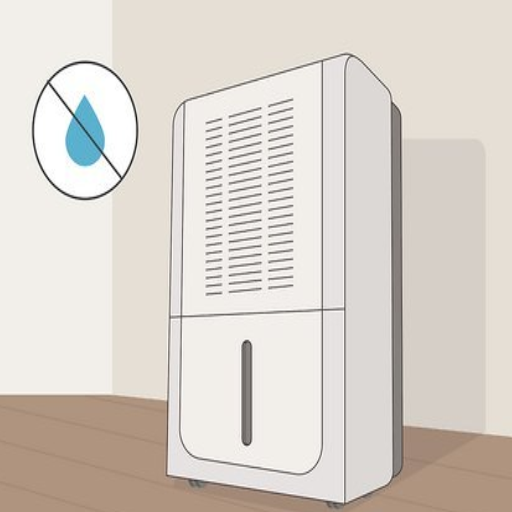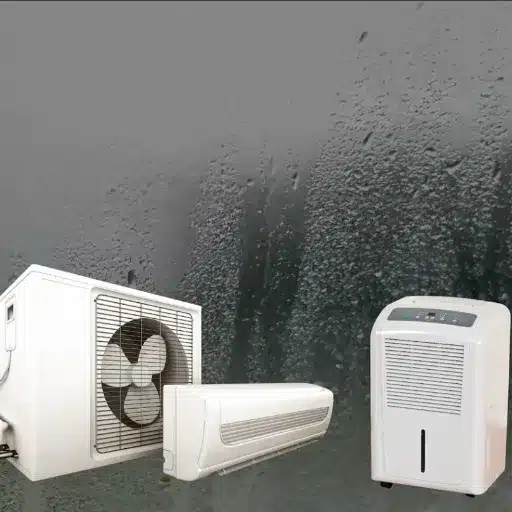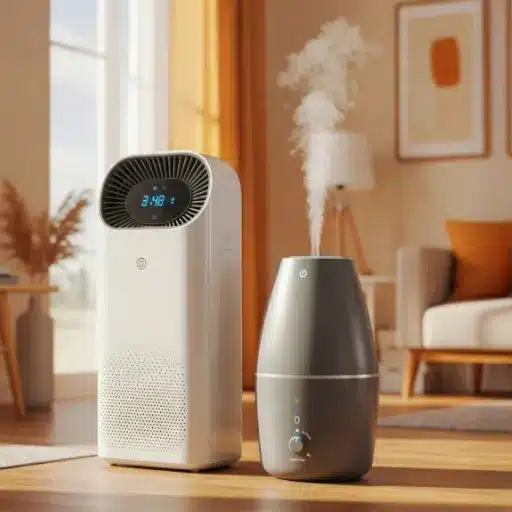Musty smells in your home can be unpleasant and persistent, often signaling an underlying issue with moisture or ventilation. If you’ve been struggling to get rid of the damp staleness, you are not alone—many homeowners face this challenge. This comprehensive guide will help you understand how dehumidifiers can be the solution to musty smells and improved air quality. From understanding the causes of excessive humidity to exploring the benefits of quality dehumidifiers, we cover everything you need to create a fresher and healthier living environment.
Understanding Musty Smells

What Causes Musty Smells in Your Home?
One of the primary causes of foul, musty smells in homes is excess humidity. When there’s too much moisture in the air, it creates favorable conditions for mold and mildew growth, which produces unpleasant odors. Common problem areas include:
- Basements: Naturally humid due to below-ground location
- Bathrooms: High moisture from showers and baths
- Kitchens: Steam from cooking and dishwashing
- Areas with poor ventilation: Trapped moisture and stagnant air
- Locations with plumbing leaks: Continuous moisture source
Water damage also continues to be a significant contributor. This could result from roof leaks, wall penetration, unstable pipes, flooding, or condensation. When materials like wood, fabric, or drywall absorb moisture and don’t dry completely, they emit musty odors and encourage bacterial growth that produces additional unpleasant smells.
Key Point: Stagnant air in closed-off spaces like closets or storage areas can cause humidity levels to rise, allowing mold spores to settle and grow. Without proper air circulation, these areas quickly develop musty smells.
The Role of Mold and Mildew in Odor Development
Mold and mildew are major sources of musty odors indoors. These fungi thrive in wet, humid conditions and emit distinctive musty smells during growth. The odors primarily result from microbial volatile organic compounds (MVOCs) released during their metabolic processes.
| Factor | Impact on Odor Development | Recommended Action |
|---|---|---|
| High Humidity | Humidity levels above 60% create ideal conditions for mold/mildew growth and MVOC production | Maintain humidity between 30-50% |
| Poor Ventilation | Limits air circulation, allowing moisture and MVOCs to accumulate | Install exhaust fans, improve airflow |
| Water Damage | Provides a continuous moisture source; mold can develop within 24-48 hours | Address leaks immediately, dry affected areas |
| Organic Materials | Wood, paper, and fabrics feed mold growth and retain odors | Keep materials dry, clean regularly |
| Temperature | 77°F-86°F (25°C-30°C) maximizes MVOC production | Maintain consistent, moderate temperatures |
Impact of Humidity on Musty Smells
Humidity plays a crucial role in musty odor development. High humidity levels create ideal conditions for mold and mildew growth. When moisture is suspended in air or settles on surfaces, fungi grow and emit microbial volatile organic compounds (MVOCs) responsible for these unpleasant odors.
The problem is particularly pronounced in areas with inadequate ventilation, where moisture becomes trapped and fungal growth is reinforced. To counter these conditions, it’s essential to:
- Implement proper dehumidification processes
- Ensure balanced indoor climate control
- Provide adequate air circulation
- Maintain humidity levels below 60%
Using a Dehumidifier to Get Rid of Musty Smells
How a Dehumidifier Works to Reduce Humidity
Modern dehumidifiers operate through a straightforward yet effective process:
- Air Intake: Warm, moist air is drawn into the unit through intake vents
- Cooling Process: Air passes over chilled coils, causing moisture to condense into water droplets
- Water Collection: Condensed water is collected in an internal reservoir or drained through a hose
- Air Release: Dry air is gently warmed and released back into the room
Advanced Features: Modern dehumidifiers include hygrometers for automatic humidity monitoring, energy-efficient compressors, and built-in filters to trap allergens like dust and pollen, ensuring cleaner indoor air.
Choosing the Right Dehumidifier for Your Space
Selecting the appropriate dehumidifier depends on room size, humidity levels, and required features:
| Room Type | Recommended Capacity | Key Features to Consider |
|---|---|---|
| Small rooms (bedrooms, bathrooms) | 20-30 pints | Compact design, auto shut-off |
| Medium rooms (living rooms) | 30-50 pints | Adjustable fan speeds, humidistat |
| Large spaces (basements) | 50+ pints | Continuous drainage, heavy-duty construction |
Important considerations when selecting a dehumidifier:
- Energy Efficiency: Look for EPA ENERGY STAR® ratings for long-term cost savings
- Drainage Options: Consider continuous drainage for flood-prone areas
- Noise Level: Important for bedroom or office use
- Filter Type: HEPA filters provide superior air cleaning
Effective Placement of Dehumidifiers in Your Home
Proper placement is critical for maximizing dehumidifier effectiveness:
Placement Guidelines:
- Position 6-12 inches away from walls and furniture for adequate airflow
- Place in the most humid areas (basements, laundry rooms, bathrooms)
- Keep doors and windows closed during operation
- For large spaces, choose central locations for even air distribution
- Position near moisture sources when possible
Addressing Musty Smells in Specific Areas

Dealing with Musty Smell in the Basement
Basements are particularly susceptible to musty odors due to their below-ground location and tendency toward high humidity. Here’s a comprehensive approach:
- Identify Moisture Sources:
- Check for foundation leaks
- Inspect wall cracks
- Examine window seals
- Look for plumbing issues
- Implement Waterproofing:
- Seal cracks in walls and foundation
- Waterproof walls and floors
- Improve exterior drainage
- Install Proper Dehumidification:
- Choose an appropriately sized unit for the basement dimensions
- Ensure continuous operation during humid months
- Consider units with continuous drainage
Solutions for Poorly Ventilated Rooms
Poor ventilation creates conditions for moisture buildup and stale air. Implement these solutions:
| Solution | Application | Benefits |
|---|---|---|
| Exhaust Fans | Bathrooms, kitchens, laundry rooms | Remove moisture and odors directly |
| Air Purifiers | Bedrooms, offices, enclosed spaces | Filter pollutants, allergens, and odors |
| Cross-Ventilation | Opening opposing windows | Natural air circulation and fresh air exchange |
| Mechanical Ventilation | Whole-house systems (HRV/ERV) | Consistent fresh air with energy efficiency |
| Houseplants | Various indoor locations | Natural air purification and humidity regulation |
Preventing Musty Smells in High Humidity Areas
Prevention is key to maintaining fresh, odor-free environments in naturally humid areas:
- Regular Inspection: Check for leaks from pipes, windows, and roofs
- Moisture Absorbers: Use silica gel or activated charcoal in confined spaces
- Air Circulation: Open windows during favorable weather, use fans
- Humidity Control: Maintain 30-50% relative humidity
- Filter Maintenance: Clean air conditioner filters regularly
- Targeted Cleaning: Focus on mold-susceptible areas like bathroom tiles
Maintaining Your Dehumidifier for Optimal Performance
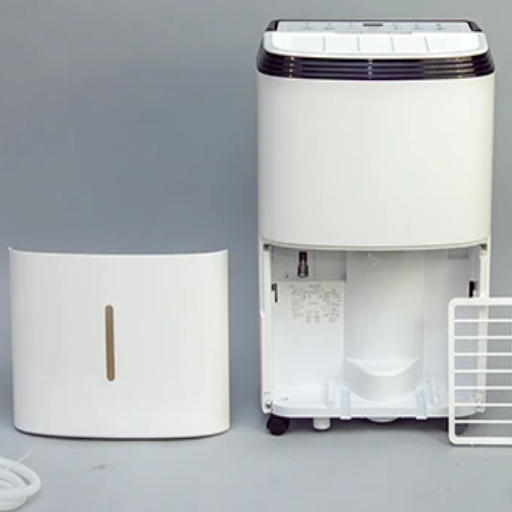
Regular Maintenance Tips for Your Dehumidifier
Proper maintenance enhances operational efficiency and extends equipment lifespan:
Essential Maintenance Schedule:
- Weekly: Empty and clean the water collection tank
- Bi-weekly: Clean or replace air filter
- Monthly: Inspect and clean coils
- Quarterly: Check the drain hose for clogs
- Seasonally: Calibrate the humidity sensor if available
Signs of a Failing Dehumidifier
Recognizing warning signs can prevent more serious problems:
| Warning Sign | Possible Cause | Action Required |
|---|---|---|
| Musty Smell | Mold/mildew growth in the unit | Deep clean the tank and internal components |
| Burning/Chemical Odor | Overheating, faulty wiring, motor problems | Immediately turn off. Professional inspection required |
| Sour/Rotten Smell | Bacterial buildup | Thorough cleaning improves the maintenance schedule |
| Reduced Efficiency | Dirty filters, clogged coils | Clean or replace filters, service coils |
How to Clean and Care for Your Device
Follow these steps for proper dehumidifier maintenance:
- Safety First: Always unplug before cleaning
- Tank Cleaning: Remove and wash with warm soapy water, dry thoroughly
- Filter Care: Vacuum or rinse washable filters; replace non-washable ones
- Vent Cleaning: Use a soft brush to clear intake/exhaust vents
- Coil Maintenance: Gently clean with a soft-bristle brush
- Exterior Care: Wipe with a damp cloth, check connections
Long-Term Solutions for Preventing Musty Smells
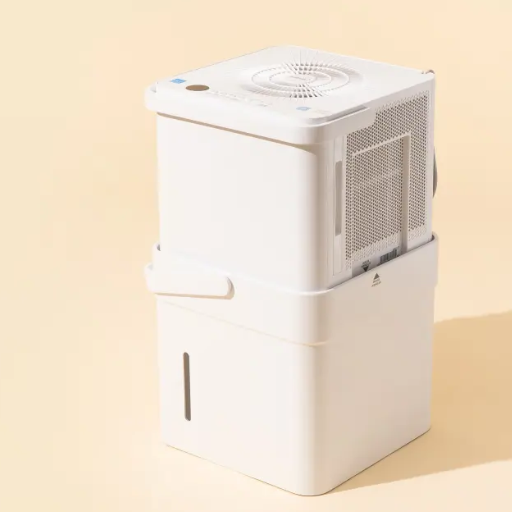
Improving Indoor Air Quality
Creating lasting improvements requires a comprehensive approach:
- Enhanced Ventilation: Install exhaust fans in high-moisture areas
- Air Purification: Use HEPA filter air purifiers
- Regular Cleaning: Vacuum with HEPA filters, wash fabrics frequently
- Natural Solutions: Incorporate air-purifying houseplants
- Pollutant Control: Avoid indoor smoking, choose low-VOC products
Additional Methods Beyond Dehumidifiers
Complement dehumidifier use with these effective strategies:
| Method | How It Works | Best Applications |
|---|---|---|
| Moisture-Absorbing Plants | Boston ferns, areca palms absorb moisture while purifying the air | Living spaces, bedrooms |
| Natural Desiccants | Silica gel, activated charcoal, and rock salt absorb moisture | Closets, storage areas, small spaces |
| Strategic Ventilation | Cross-ventilation removes humid air | Entire home during favorable weather |
| Temperature Control | Consistent temperatures prevent condensation | Throughout the home with proper insulation |
Creating a Musty-Free Environment
Maintain a fresh, healthy home environment with these integrated approaches:
Comprehensive Strategy:
- Moisture Control: Use dehumidifiers, fix leaks immediately, and wipe wet surfaces
- Air Circulation: Open windows regularly, use exhaust fans, and employ air purifiers
- Temperature Management: Maintain steady temperatures, ensure proper insulation
- Regular Maintenance: Clean routinely, address issues promptly
Frequently Asked Questions (FAQ)
References
Evaluation of Dampness-Associated Respiratory Symptoms with Relocation of Staff During Remediation of an Elementary School
Discussing the use of dehumidifiers to prevent musty odors in damp indoor environments.
Nightmare on Mildew Boulevard–Home Remedies (1998)
An informative guide for using dehumidifiers to combat mildew and musty odors in the home.
Odour Detection System for Allergy Sufferers
Describes that dehumidifiers are integrated into ozone generation systems to improve air quality and reduce odors caused by molds.
Take Action Today: Don’t let musty smells compromise your home’s comfort and your family’s health. Implement these dehumidifier solutions and maintenance practices to create a fresh, healthy living environment that you can enjoy year-round.

